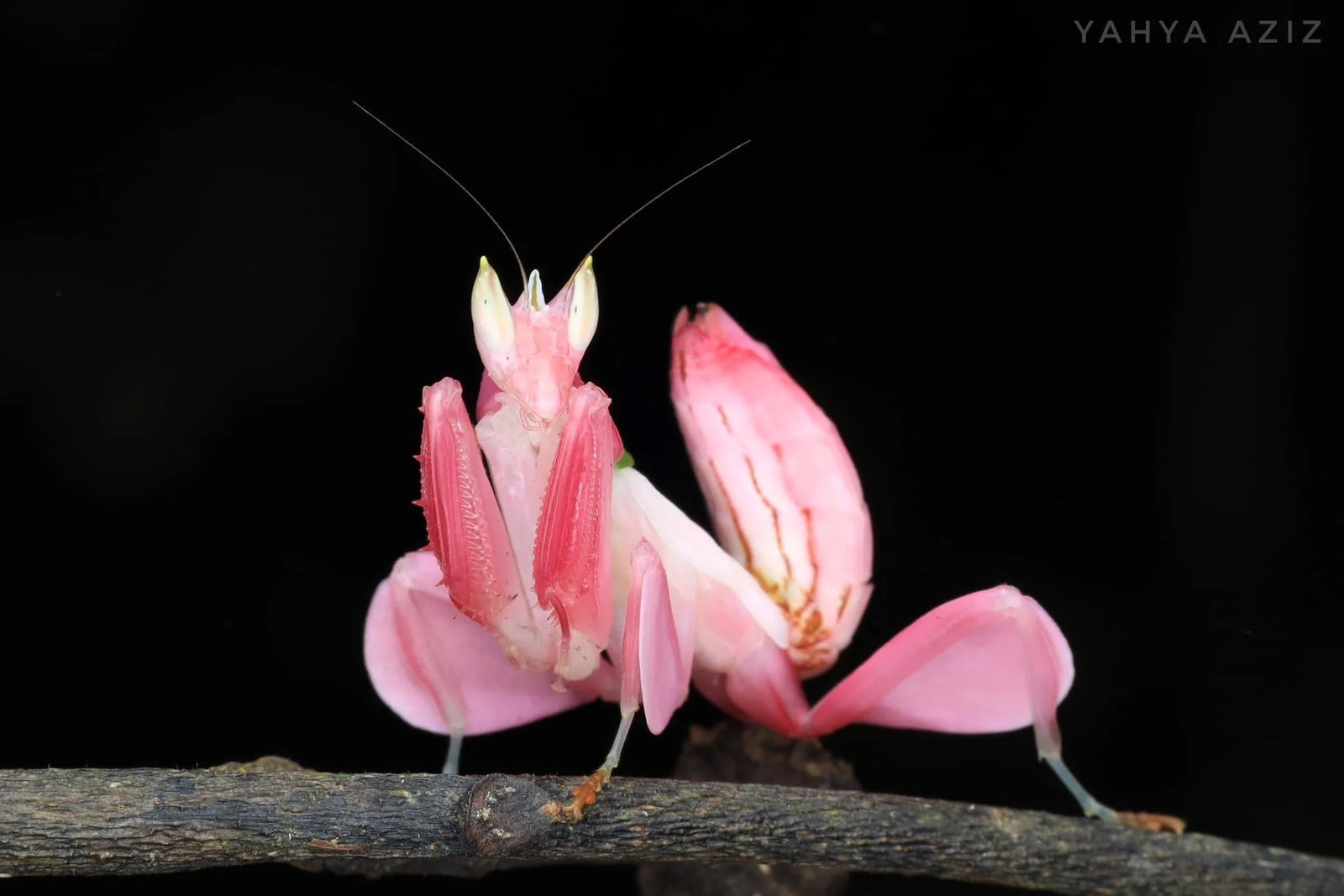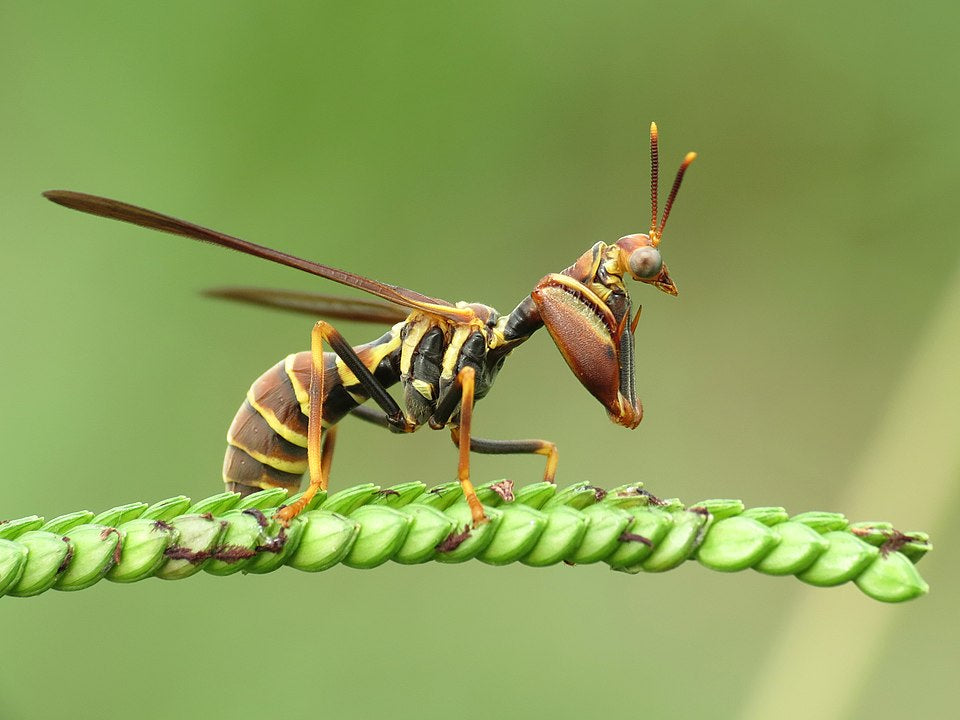Menu
-
- Home
- Contact
- Search
-
Shop
- Live Feeder Insects
-
Supplies
- Habitats
- Feeders
- Feeders and Microfauna Breeding Supplies
- Bioactive Kits
- Bioactive Supplies
- Containers
- Insect Culture Cups
- Insect Culturing Cups and Lids
- Classroom Projects
- Live Air Plants bioactive
- Substrates
- Lighting and Heating
- Cages, Habitats, Bug Boxes, Vivariums, Insectariums
- Bark
- Shipping supplies, Heat packs, cold packs, containers
- Bio-Active
- Plants
- Mantis Gallery
- Usmantis Reviews
- Praying Mantis
- Mantis
- Praying Mantis eggs ootheca for pest control
- BioActive Supplies
- Beneficial Insects
- Help Videos
- Top 5 Praying mantis as pets,
- Blog
-
Shop By Family
- Praying Mantis
- Care Sheets
- Track Order
- Live Feeder Insects
- Wholesale prices for bulk orders
- FAQ
- Galleries of Mantis Videos
-
- Home
- Search
- About us
- Shipping
- Refund Policy
- Track Orders
- Contact us
- Blog
- Beneficial Insects
- Sitemap
- Reviews
-
Film production resources
- Wholesale
- FAQ
- Login
-
English

Stenophylla lobivertex unknown pheromone gland of female
February 22, 2023 4 min read
ABSTRACT The hitherto unknown pheromone gland of female Stenophylla lobivertex Lombardo, 2000, a poorly understood praying mantis distributed in the Neotropics, is described and figured. In contrast to other mantodeans, this species has a protrusible, bifurcated (Y-shaped) gland of 6 mm length. It is protracted by sexually receptive females during nighttime and only when undisturbed. The significance of this morphological and behavioral adaptation is discussed in light of the reproductive strategy of the species and its assumed rarity in the natural habitat. KEYWORDS Calling behavior, Neotropics, praying mantis, reproductive strategy INTRODUCTION Morphologically and phylogenetically unique taxa often exhibit traits not found in related groups (Pavoine et al. 2005, Redding et al. 2008). Such traits might provide crucial information on the evolution of morphological and behavioral characters that cannot be inferred from the study of their relatives alone. Among insects, notable examples are the stenopelmatoid ensiferan Cooloola Rentz, 1980 (Rentz 1999), the phasmatodean Dryococelus Gurney, 1947 (Buckley et al. 2008), and the mantodean Metallyticus Westwood, 1835 (Wieland 2008). This also highlights the importance of including such taxa in phylogenetic analyses. Mate attraction is facilitated through pheromones in many insect taxa, and praying mantises (Mantodea) are no exception. Behavioral experiments suggesting pheromone emission of praying mantis females were first described by Kelner-Pillault (1957), who observed a caged European mantis female (Mantis religiosa Linnaeus, 1758) attracting males from surrounding habitats. Meanwhile, several observations in captivity and in the wild have documented pheromone-emitting behavior in many mantodeans (e.g., Edmunds 1975, Robinson and Robinson 1979; Hurd et al. 2004; Gemeno et al. 2005; Perez 2005, Holwell et al. 2007, Maxwell et al. 2010, Berg et al. 2011, Schwarz 2018). Hurd et al. (2004) were the first to show that a pheromone is indeed produced by sexually active female mantodeans. During the attracting behavior, usually named “calling”, the apex of the abdomen is bent ventrad in long-winged species (to an extreme in Acanthopinae; Robinson and Robinson 1979), exposing the intersegmental membrane between the sixth and seventh tergite, where the pheromone gland is located. In the groups studied so far, this membrane protrudes, at most, very slightly. Here, we present a unique sexual attraction mechanism exhibited by the leaf-like mantis Stenophylla lobivertex Lombardo, 2000, a member of the exclusively Neotropical family Acanthopidae (Schwarz and Roy 2019). MATERIALS AND METHODS We observed and documented the behavior of four females from November 2017 to June 2018 (N = 1) and from October 2019 to March 2020 (N = 3). The first observations were made by the second author in a female from the Panguana research station (9°37'S, 74°56'W, 260 m a.s.l.) in Amazonian Peru. Three additional females were part of a captive bred stock, likewise from Peru, obtained by the first author from a Mantodea breeder in Germany. RESULTS As in other species studied so far, the pheromone gland of Stenophylla lobivertex is located between the sixth and seventh tergite. It is inflated into a Y-shaped structure during calling and usually sticks out almost vertically from the body (Fig. 1), but each lobe can also be moved in a tentacle-like manner. The fully inflated organ is 6 mm long, about 1 mm thick at both ends and filled with haemolymph, which gives the organ a greenish-blue appearance. Tracheae can be seen shining through the thin membrane. Figure 1. Pheromone gland of Stenophylla lobivertex. A. Lateral view of calling female; B. Pheromone gland in anterolateral view; C. Pheromone gland in posterolateral view. Photos by C. J. Schwarz. The captive stock females continued to call after being mated multiple times but produced unfertile oothecae, indicating that the copulations might have been unsuccessful. Our observations so far suggest that calling behavior is reduced in females older than six months. Calling in Stenophylla occurred, like in other mantodeans, over the course of 2–5 hours per night and only in deep darkness and when undisturbed. Temperature during the observational period reached 26 to 29°C by day and 22 to 24°C by night, at 70–90% relative humidity. The protraction of the gland occurred over the course of several minutes, but upon disturbances, such as vibrations or illumination by artificial lights, the pheromone gland was retracted instantly. DISCUSSION So far, Stenophylla lobivertex is the only species of more than 2,500 known mantodean species whose pheromone gland has evolved into a distinct, inflatable morphological structure. While the pheromone glands can attain the shape of a pair of small bulges in some other taxa (e.g., Acanthopinae, Tarachodes Burmeister, 1838: Edmunds 1975, Robinson and Robinson 1979), no other known mantodean inflates its pheromone gland into a Y-shaped structure. However, the two congeners of S. lobivertex might possess a similar structure. The significance of this unique structure remains speculative at this point, but we argue that this type of protrusible gland with its increased surface might be able to distribute pheromones more efficiently than the less elaborate glands of other mantodean species. This structure might, therefore, help to assure efficient mate finding in a species apparently characterized by low population density in combination with a short reproductive period. Stenophylla are rarely observed in nature, and only a handful of specimens of the three known species are present in museum collections. The rarity of this taxon might be partly due to its reproductive K strategy (MacArthur and Wilson 1967). Preliminary observations on captive specimens revealed that females produce only 3–5 oothecae during their lifetime, which contain at most 30 eggs (Rönisch and Schwarz 2019). Females guard their egg cases until the young hatch; the hatchlings are 13 mm long (as compared to 40–44 mm in adults). The natural phenology of Stenophylla is unknown, but during more than 35 years of regular collections at the Panguana field station in Peru, adult specimens (deposited in the Staatliches Museum für Naturkunde, Karlsruhe [SMNK], the Zoologische Staatssammlung München [ZSM], and in the collection of CJS) were only found in the months of August to October (Schwarz et al. 2020). The specimens of the type series were captured in October and November (Lombardo 2000). Finding a sexual partner when population density is low and adults are not found year-round is challenging. This is especially true in a highly complex rainforest ecosystem and thus may explain the need for an elaborate and “safe-proof” sexual attraction mechanism in this mantodean.
Leave a comment
Comments will be approved before showing up.
Also in Praying Mantis News! Join the conversation.

orchid mantis evolutionary research
June 06, 2025 2 min read
The orchid mantis (Hymenopus coronatus) transitions from black-and-red to pink-white coloration during development, a shift driven by the Redboy pigment transporter. This transition serves different ecological functions: red coloration helps hatchlings mimic stink bugs for predator avoidance, while the pink-white coloration of older nymphs provides floral camouflage for both predator avoidance and prey attraction. The Redboy transporter, upregulated by ecdysone, facilitates this shift by exporting red pigments in early stages and importing white pigments in later stages.
Evolutionary Basis:
Redboy's Role:
The Redboy transporter, a novel ABCG transporter, arose by gene family expansion and positive selection, specifically to handle the transition from red to white coloration, according to research on Nature.
Hormonal Regulation:
The hormone ecdysone regulates Redboy, ensuring the pigment transition happens at the appropriate developmental stage, according to research on ResearchGate.
Genetic Adaptation:
The evolutionary changes in Redboy have allowed orchid mantises to adapt their body color to different life stages and ecological niches.
Ecological Functions:
Aposematic Mimicry (Hatchlings):
The initial black-and-red coloration serves as a warning signal, mimicking the appearance of stink bugs, which are known to be distasteful or toxic to predators.
Camouflage (Older Nymphs):
The pink-white coloration provides floral camouflage, helping the mantis blend in with flowers and avoid detection by predators.
Prey Attraction:
The flower-like appearance also attracts unsuspecting prey, such as small insects, to their location, enhancing the mantis's hunting success.
In summary, the orchid mantis's body color transition is a fascinating example of ontogenetic camouflage and adaptive evolution, where the color changes throughout the mantis's life serve distinct ecological roles in where the color changes throughout the mantis's life serve distinct ecological roles in predator avoidance and prey attraction.
Read More

Mantis fly Mantispidae, very special insect
October 15, 2024 3 min read
Mantispidae, they don’t sting! 

Recent Articles
-
orchid mantis evolutionary research
June 06, 2025
-
New Yorker article 1955 Mantis Man
March 09, 2025
-
Mantis fly Mantispidae, very special insect
October 15, 2024
-
Do insects have feelings? Love or Hate? What’s your opinion
September 09, 2024
-
How Praying Mantises Hear: One ear
July 19, 2024
-
Identifying Domestic species
July 19, 2024
-
Invasive claims and irresponsible advice
April 13, 2024
-
Is it time for insect researchers to consider their subjects’ welfare?
April 08, 2024
-
My Awesome Summer by P. Mantis Children’s book
April 07, 2024
-
Toxodera
April 06, 2024
Categories
- animal husbandry
- best feeders
- best mantis for pest control
- breeding praying mantis
- buy praying mantis
- Cannabis
- crickets
- discussion
- dormitory pet
- Drosophila
- education
- egg
- entomology
- fertility
- flightless fruit flies
- Flower mantis
- Friendly Bugs For Cannabis
- fruit fly culture
- geometric morphometrics
- Ghost mantis
- happy experience with pets
- Hydei
- Hymenopodidae
- Hymenopus coronatus
- invasive
- keeping insects alive
- Lucky mantis
- Major League baseball Perez Kisses Lucky Mantis!
- make money
- mantis for dummies
- mantis ooth
- Mantodea
- melanogaster
- mimicry
- mismolt
- new species
- ooth
- ooth care
- ootheca
- P paradoxa
- pest
- Pest control
- pet nutrition
- praying mantis
- praying mantis care
- praying mantis for sale
- reptile feeders
- School project
- scientific research
- Sexing praying mantis
- Shipping
- signalling
- stem
- stenophylla
- Store news
- stress from shipping
- usmantis
- we buy mantis
Menu Title
This section doesn’t currently include any content. Add content to this section using the sidebar.
Subscribe
Sign up to get the latest on sales, new releases and more …
Invalid Password
Enter